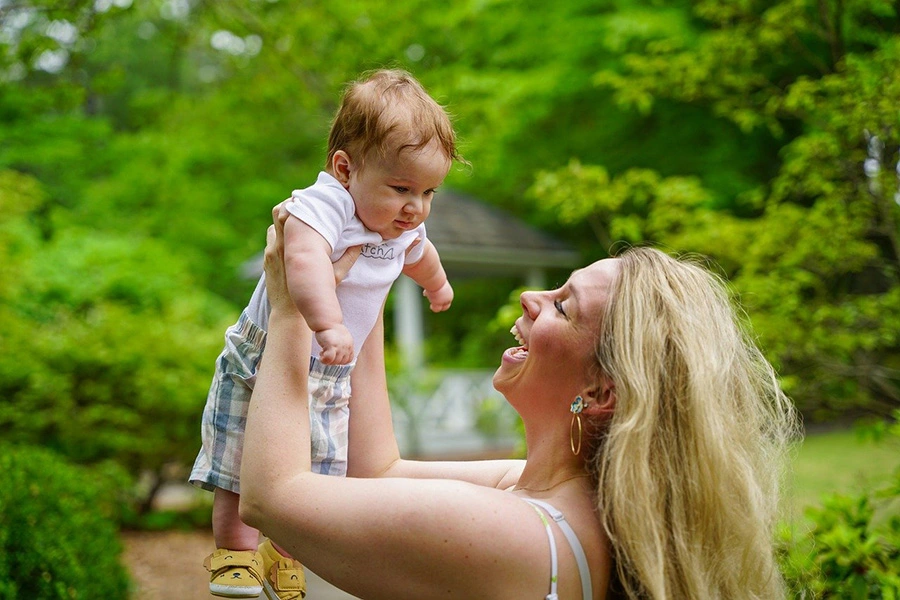Managing Separation Anxiety

I remember when I had my first child and couldn’t fathom leaving her! As time went on and we became more attached, that feeling deepened. Yet, I also felt the need to have a little time to myself. Thankfully, with our parents nearby to help, my husband and I could sneak bits of time away. Initially, it was harder for me than her as she seemed pretty unbothered! But as time passed, she started to get upset when I would leave.
Separation anxiety is a normal developmental milestone that all children experience. According to the Children’s Hospital of Philadelphia, it begins around 9 months, peaks at 18 months, and fades by the age of 3. It is a healthy response that reflects the attachment your child has to you. However, just because it’s normal doesn’t make it easy. Let’s explore some strategies to ease separation anxiety.
1. Identify a Safe Space
Designate a room or space where your child can play and explore without your direct supervision. Start by putting them on the floor with a few toys and move out of sight. You can start slow by just moving to the other side of the rug and gradually transition to being out of the room.
2. Accept the Reality
Remember that separation anxiety is normal and healthy. Don’t avoid it by staying with your child 24/7. Allow them to get upset when you leave and provide reassurance by reminding them that you always come back. There will be a few tears, but that is the natural process needed for them to understand this concept.
3. Start Slow
When planning your outings, be mindful of the time. Plan for shorter times away at first (e.g., dinner or coffee) and extend to longer outings (e.g., dinner and a movie or overnight) as they become accustomed to the change.
4. Familiar Face
Plan to leave them with a familiar face at first, perhaps a grandparent or other family member. If that is not an option, arrange for a sitter who can spend time with your child while you are present at least once, then plan to leave on subsequent visits.
5. Don’t Leave Right Away
Regardless of who is staying with your child, be sure not to leave immediately after their arrival. Hang around for a bit (20-30 minutes) so that your child sees your familiarity with the person and feels reassured that they are trustworthy.
6. Say Goodbye
Avoid the temptation to leave while they’re distracted. Take the time to say a proper goodbye and remind them that you will return. Despite the tears, this is an important step in helping them realize that you will keep your promise to come back.
7. Create a Routine
Similar to a bedtime routine, you can create a goodbye routine to help your child recognize and accept the situation. A quick hug and kiss, a key phrase (e.g., “Goodbye, have fun with [sitter’s name]”), and a statement on when you will return will provide the reassurance they need.
8. Speak Their Language
Avoid saying you’ll be back soon or giving a specific time since their comprehension is limited. Instead, link your return to a step in their routine, such as “I will be back before/after naptime,” “after dinner,” or “before bath.”
There you have it, eight tips to manage separation anxiety. While they won’t eliminate tears entirely, they lay a good foundation for handling this normal developmental milestone. However, there are times when separation anxiety can be worrisome. According to the Children’s Hospital of Philadelphia, 3% of children may continue to experience it into elementary school. If your child has significant issues by school age, reach out to your pediatrician so they can assess and provide additional resources as appropriate. I hope these tips give you the confidence to carve out a little time for yourself!